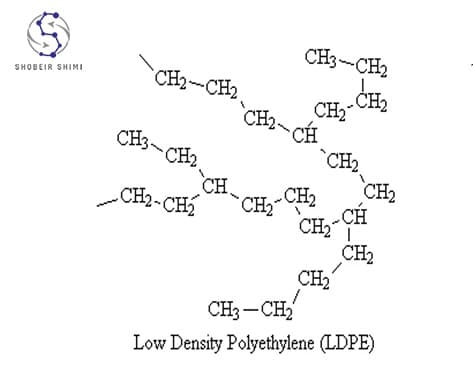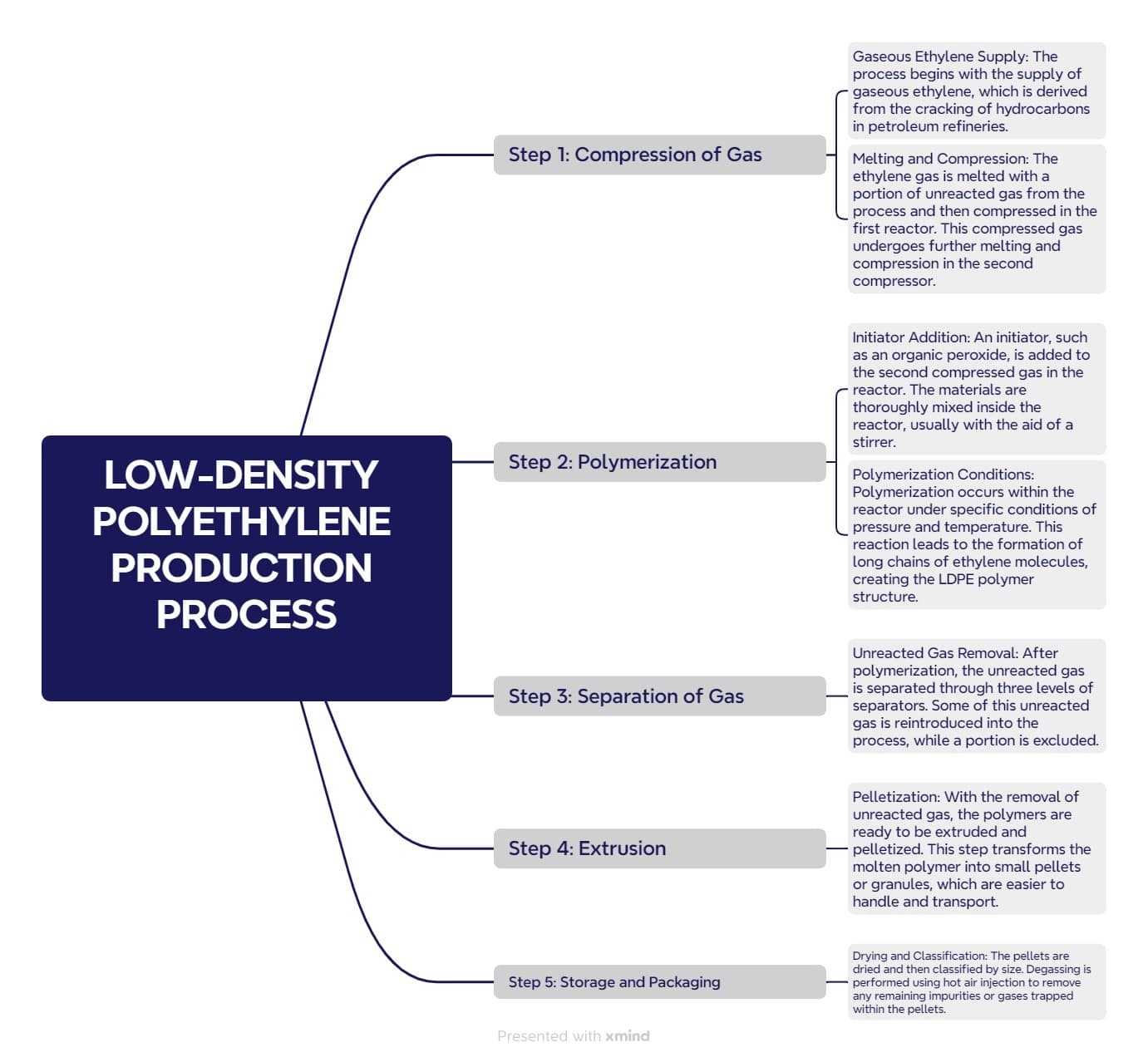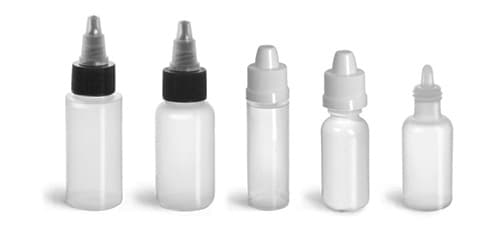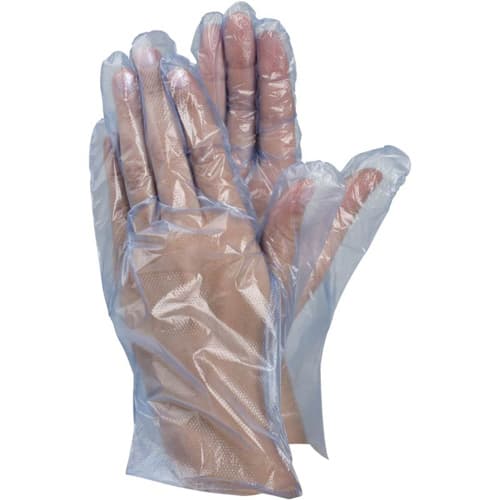Low-Density Polyethylene (LDPE) is a highly versatile thermoplastic belonging to the broader polyethylene family. It’s distinguished by its unique molecular structure, featuring long chains of ethylene monomers, represented by the chemical formula (C2H4)n. While this formula is identical to that of High-Density Polyethylene (HDPE), the key difference lies in their densities, arising from the extensive branching present in LDPE’s molecular structure. This branching defines low-density polyethylene as a distinct low-density polymer.
LDPE is widely recognized for its inherent flexibility and transparency, making it a popular choice across various industries. Its beneficial properties include excellent corrosion resistance, remarkable durability, and affordability. These characteristics allow for its common use in the production of everyday plastic goods, such as cling wrap, flexible plastic bags, and juice containers. When identifying products made from this material, look for the number 4 inside a recycling triangle. The specific properties of LDPE grades are carefully tailored to suit these diverse applications, ensuring optimal performance for each intended use. Understanding the density of LDPE is crucial for appreciating its unique characteristics.
LDPE grades
| GRADE | PRODUCER | MFR (gr/10min) | DENSITY (g/cm3) | DATASHEET |
|---|---|---|---|---|
| 2420D | AMIRKABIR | 0.25 | 0.923 | |
| 2420E02 | BAKHTAR | 1.95±0.25 | 0.9235±0.0015 | |
| 2420 F | AMIRKABIR | 0.75 | 0.923 | |
| 2420 H | AMIRKABIR | 1.9 | 0.925 | |
| 2420 K | AMIRKABIR | 4 | 0.925 | |
| LIM1922 | ARYA SASOL | 22 | 0.919 | |
| LFI2119 | ARYA SASOL | 1.9 | 0.921 | |
| LFI2047A | ARYA SASOL | 4.7 | 0.924 | |
| LH0075 | BANDAREIMAM | 0.75 | 0.920 | |
| LF0200 | BANDAREIMAM | 2 | 0.920 | |
| 1922T | LALEH | 22 | 0.919 | TDS |
| 2100TN00 | LALEH | 0.3 | 0.921 | TDS |
| 2102TX00 | LALEH | 1.9 | 0.921 | TDS |
| 2404TC47 | LALEH | 4.7 | 0.924 | TDS |
| 2420F3 | BAKHTAR | 0.3(±)0.05 | 0.923(±)0.002 | TDS |
| 2420F8 | KHALIJEFARS, BAKHTAR | 0.8(±)0.1 | 0.923(±)0.002 | TDS |
| 2130 | ARYA SASOL | 0.3 | 0.921 | TDS |
What is Low-Density Polyethylene (LDPE)?
Low-density polyethylene (LDPE) was the very first grade of polyethylene, initially produced in 1933 by Dr. John C. Swallow and M.W. Perrin, who were working for Imperial Chemical Industries (ICI). Their pioneering work utilized a high-pressure process via free radical polymerization to create this revolutionary low-density polymer.
The defining characteristic of LDPE, which sets it apart from other polyethylene types like HDPE, is its highly branched molecular structure. LDPE has significantly more branching (occurring on approximately 2% of its carbon atoms) than HDPE. This extensive branching prevents the polymer chains from packing together tightly, resulting in weaker intermolecular forces (specifically, instantaneous-dipole induced-dipole attractions) between the chains. This molecular arrangement is directly responsible for LDPE’s properties: making it softer, more flexible, and more ductile, though inherently less strong and rigid compared to HDPE. Despite its lower rigidity, LDPE plastic is quite flexible and remarkably tough, making it an ideal material for applications requiring a forgiving, pliable plastic.
Key Characteristics of LDPE:
- Recycling: Approximately 5.7% of LDPE is recycled in the United States, typically marked with the recycling code “4”.
- Density: It possesses a relatively low density, generally ranging from 917–930 kg/m$^3$. This low density of LDPE is a direct consequence of its branched structure.
- Temperature Resistance: LDPE can withstand temperatures of up to 65°C (149°F) continuously and approximately 90°C (194°F) for short durations. This limits its use in high-temperature applications.
- Branching: The high degree of short and long-chain branching is the defining feature of LDPE structure, leading to weaker intermolecular forces and higher resilience compared to more linear polyethylenes.
- Greenhouse Gas Emissions: Recent studies indicate that LDPE can produce significant amounts of methane and ethylene (potent greenhouse gases) when exposed to sunlight, especially as it degrades, raising concerns about its long-term environmental footprint compared to its initial production.
| Recycling | 5.7% of LDPE is recycled in the United States |
|---|---|
| Density | Density range of 917–930 kg/m^3 |
| Temperature Resistance | Can withstand temperatures of 65°C continuously and 90°C for a short time |
| Branching | Has more branching than HDPE, resulting in weaker intermolecular forces and higher resilience |
| Greenhouse Gas Emissions | Produce significant amounts of methane and ethylene when exposed to sunlight, emitting greenhouse gases at a more unsustainable rate |
Low-Density Polyethylene Structure: The Branched Architecture
The Low-Density Polyethylene (LDPE) structure is a key differentiator among plastic materials, setting it apart from its counterparts like High-Density Polyethylene (HDPE) and Linear Low-Density Polyethylene (LLDPE). This distinctive branched structure is precisely what gives LDPE its characteristic flexibility, ductility, and clarity, making it ideal for a wide range of applications, particularly in the LDPE film industry. Understanding the structure of LDPE is fundamental to comprehending its performance.
The Branched Architecture of LDPE
Unlike the more linear, highly ordered arrangement of HDPE, the LDPE’s molecular structure is defined by numerous short and long chain branches extending from the main polymer backbone. Imagine a central tree trunk (the main chain) with many limbs and twigs (the branches) sprawling outward – this is analogous to the LDPE molecular structure. These branches prevent the polymer chains from packing together tightly and forming dense crystalline regions. This open, less compact arrangement directly leads to a lower density and reduced crystallinity for polyethylene low density. This unique low-density polyethylene structure directly contributes to its softness, excellent processability, and its hallmark flexibility.

Low-Density Polyethylene Chemical Formula and Composition
As a type of polyolefin, the low-density polyethylene chemical formula is derived from repeating ethylene (C₂H₄) units. The general chemical formula for LDPE is expressed as (C2H4)n, where ‘n’ signifies a large, variable number of covalently bonded ethylene monomers forming the long polymer chain. This fundamental chemical composition of LDPE is consistent across different production methods, although the degree and type of branching can vary significantly, influencing the specific properties of LDPE. The ldpe repeat unit is simply the ethylene molecule.

Backbone and Branching: The Core of LDPE’s Properties
The fundamental low-density polyethylene structure consists of a hydrocarbon backbone – a long chain of carbon atoms linked linearly, with hydrogen atoms attached to each carbon. The crucial element that defines LDPE is the presence of branches, also composed of carbon and hydrogen atoms, that extend irregularly from this main chain.
These branches are responsible for disrupting the orderly alignment of the polymer chains, resulting in:
- Lower Density: The less compact arrangement of molecules directly translates to the characteristic density of LDPE, making it lighter than HDPE.
- Reduced Crystallinity: Fewer organized crystalline regions lead to a more amorphous (less structured) material. This amorphous nature contributes significantly to LDPE’s flexibility.
- Enhanced Flexibility and Resilience: The tangled, branched chains can slide past each other more easily, allowing the material to deform without breaking and return to its original shape. This makes LDPE highly resilient to impact.
This unique structure of LDPE with its intricate branching system is what enables its widespread use in packaging, LDPE films, and various consumer products where flexibility, toughness, and good optical clarity are paramount.
Low-Density Polyethylene Properties: Density of LDPE, Melting Point, and More
Understanding the specific low-density polyethylene properties is essential for selecting the correct material for various applications.
low density polyethylene density
Low-density polyethylene (LDPE) has a characteristic density range of 0.910-0.940 g/cm³ (or approximately 0.0331-0.0340 lb/in³). This lower density compared to other polyethylene variants like HDPE (which typically ranges from 0.941-0.965 g/cm³) is a direct result of its highly branched molecular structure, which prevents the polymer chains from packing tightly. The precise density of LDPE depends on specific factors such as the degree of branching, the molecular weight distribution, and the resulting crystallinity.
Typical values for LDPE density are:
- 910-0.925 g/cm³ (0.0331-0.0334 lb/in³) for conventional LDPE.
- 918-0.940 g/cm³ (0.0333-0.0340 lb/in³) for linear low-density polyethylene (LLDPE), which, while still low density, has a more controlled branching and often falls at the higher end of the LDPE density spectrum.
The lower density of LDPE compared to HDPE results in a less compact molecular structure, making LDPE inherently more flexible and less rigid. This flexibility is maintained even at very low temperatures, a valuable property for cold-weather applications
Low density polyethylene melting point
The melting point of low-density polyethylene (LDPE) typically ranges from 105 to 115°C (221 to 239°F). This relatively lower melting point compared to HDPE (which melts around 120-130°C) is again attributed to its branched molecular structure. The irregular branching leads to lower crystallinity, meaning fewer ordered regions that require higher energy to break down, thus lowering the melting point. This characteristic influences its processability and applications where heat resistance is a factor.
Low-Density Polyethylene Manufacturing Process
The production of LDPE involves a complex process that requires high pressure and temperature conditions, primarily utilizing free radical polymerization. This method is distinct from the processes used for linear polyethylenes. Here’s a step-by-step explanation of how LDPE is made:

Step 1: Compression of Gas
- Gaseous Ethylene Supply: The process begins with the supply of gaseous ethylene, which is the fundamental ldpe monomer. Ethylene is typically derived from the cracking of hydrocarbons in petroleum refineries.
- Melting and Compression: The ethylene gas is first mixed with a portion of unreacted gas from the recycling loop of the process. This mixture is then compressed in a primary compressor. This compressed gas undergoes further melting (heating) and compression in a secondary, high-pressure compressor, reaching pressures up to 3000 atmospheres.
Step 2: Polymerization
- Initiator Addition: Within the high-pressure reactor, a small amount of an initiator (such as an organic peroxide or oxygen) is added to the super-compressed ethylene gas. This initiator starts the free radical polymerization reaction.
- Polymerization Conditions: The reaction occurs rapidly within the reactor under specific, very high-pressure (1000-3000 bar) and high-temperature (150-300°C) conditions. This free radical mechanism leads to the formation of long chains of ethylene molecules, creating the highly branched LDPE polymer structure. The extensive branching is a direct result of the free radical nature of this polymerization, which allows for chain transfer reactions.
Step 3: Separation of Gas
- Unreacted Gas Removal: After the polymerization reaction, the resulting molten LDPE polymer is separated from any unreacted ethylene gas through a series of high-pressure and low-pressure separators.
- Gas Recycling: A significant portion of this unreacted ethylene gas is then cooled, cleaned, and reintroduced back into the initial compression stage of the process, improving efficiency and reducing waste. A smaller portion is excluded or used for other purposes.
Step 4: Extrusion
- Pelletization: With the efficient removal of unreacted gas, the molten LDPE polymer is now ready to be extruded. It is typically forced through a die to form continuous strands, which are then rapidly cooled in a water bath and cut into small, uniform pellets or granules. This step transforms the molten polymer into a usable solid form, making it easier to handle, transport, and process for downstream manufacturing.
Step 5: Storage and Packaging
- Drying and Classification: The LDPE pellets are thoroughly dried to remove any residual moisture and then classified by size.
- Degassing: Degassing may be performed using hot air injection to remove any remaining volatile organic compounds or gases trapped within the pellets, ensuring the final product meets quality standards.
- Packaging: The finished LDPE pellets are then packaged into bags or bulk containers for shipment to LDPE suppliers and manufacturers worldwide.
This sophisticated manufacturing process ensures that LDPE is produced with its desired properties of flexibility, toughness, clarity, and resistance to moisture, chemicals, and specific temperature ranges, making it suitable for a wide array of applications across diverse industries.
Low-Density Polyethylene Uses: LDPE Products and Applications
LDPE is an incredibly versatile and widely used plastic material due to its unique combination of properties, excellent processability, and cost-effectiveness. The range of LDPE products is vast, touching almost every aspect of modern life.
- Packaging and Consumer Goods
Low-density polyethylene is predominantly used in various packaging and consumer goods applications, leveraging its flexibility and moisture barrier properties. Its common applications range from:
- Food Storage: Cling wrap, food storage bags (e.g., zipper-lock bags), and squeeze bottles (for condiments, honey, etc.).
- Flexible Packaging: Shopping bags, garbage bags, dry cleaning covers, bread bags, and other types of flexible LDPE film.
- Containers: Dispensing bottles, juice cartons (as an inner lining), and some rigid containers where flexibility is desired.
- Household & Personal Care: Bottles, lids, and caps for shampoos, lotions, detergents, and other household cleaners.
- General Merchandise: Liners for cereal boxes, flexible lids, and disposable gloves.



- Industrial and Agricultural Applications
In the industrial and agricultural sectors, LDPE plays a crucial role due to its durability, flexibility, and resistance to environmental factors:
- Construction: Used extensively for moisture barriers and vapor barriers beneath concrete slabs or within wall cavities, helping to protect structures from water damage and improve energy efficiency. It’s also used for temporary construction enclosures and protective sheeting.
- Agriculture: Critical for creating greenhouse films, mulch films (to suppress weeds and retain soil moisture), and silage bags (for storing animal feed). These LDPE products help control temperature, protect crops, improve crop yield, and support sustainable agricultural practices.
- Geomembranes: LDPE is employed in geomembranes for waterproofing and lining applications in landfills, reservoirs, canals, and tunnels, providing essential environmental protection and containment.
- Coatings: Used as a coating for paper milk cartons and beverage cups to provide a liquid-resistant barrier.
- Wire and Cable Insulation: Its good electrical insulation properties make it suitable for insulation in some wire and cable applications.



- Medical and Recreational Uses
LDPE is also invaluable in specialized fields due to its safety, flexibility, and chemical resistance:
- Medical Field: Essential for various medical containers, flexible tubing, and some types of surgical gloves (though natural rubber latex is more common for gloves). Its non-toxic nature is critical here.
- Recreational Products: Finds applications in floats, various types of toys (especially squeeze toys), and boating accessories, capitalizing on its buoyancy and durability to provide safe and lasting products for leisure activities.
- Disposable Items: Used in the production of disposable gloves and aprons for various industries including food handling, healthcare, and general cleaning, underscoring its adaptability and safety across different sectors.



The wide array of LDPE products highlights its indispensability as a go-to material for applications requiring a combination of flexibility, chemical resistance, and cost-effectiveness.
Advantages of LDPE Material
The widespread adoption of low-density polyethylene (LDPE) stems from a compelling list of advantages:
- Cost-Effective: LDPE is relatively inexpensive to produce, making it an affordable option for manufacturers and consumers alike. This LDPE price point contributes significantly to its ubiquity.
- Lightweight and Flexible: Its low density contributes to its lightweight nature, which facilitates easy transportation and reduces material The inherent flexibility of LDPE allows it to be easily molded, extruded, or blown into various shapes, making it suitable for an extremely wide range of applications.
- Durable and Tear-Resistant: LDPE exhibits good durability and can withstand everyday wear and tear, making it essential for products like flexible bags, LDPE film, and liners. It offers excellent impact strength.
- Moisture Resistant: This material effectively protects products from moisture damage, extending shelf life and preventing spoilage, particularly crucial in food packaging.
- Chemical Resistance: LDPE resists many common chemicals, acids, and bases, making it suitable for packaging a variety of products, including food and cleaning supplies.
- Transparency: Certain LDPE products are clear or translucent, allowing consumers to see the contents, which is a significant advantage in packaging applications for marketing and convenience.
- Easy to Process: LDPE can be easily melted, shaped, and molded using various common plastic processing techniques (e.g., blow molding, injection molding, film extrusion), facilitating its use in a wide variety of products.
- Impact Resistant: Despite its lower tensile strength compared to HDPE, LDPE has remarkably high impact resistance, making it durable for applications like squeeze bottles and flexible containers.
- Thermal Stability: LDPE retains its shape and properties well across a range of typical ambient temperatures, usually from -40°C to 90°C, which is suitable for many everyday applications.
Disadvantages of LDPE Plastic
Despite its numerous benefits, low-density polyethylene (LDPE) also comes with certain limitations that must be considered:
- Non-Biodegradable: One of the major disadvantages of LDPE is its non-biodegradable nature. LDPE products can take hundreds to thousands of years to break down in landfills, contributing significantly to environmental pollution and the global plastic waste accumulation crisis.
- Limited Heat Resistance: LDPE has a moderate melting point and cannot withstand high temperatures without deforming. This limits its use in applications requiring sustained heat resistance, such as food packaging that needs to be boiled, sterilized, or used for hot liquids, or in hot water pipes.
- Lower Strength and Rigidity: Compared to High-Density Polyethylene (HDPE) or other engineering plastics, LDPE has lower tensile strength and rigidity. This means LDPE may stretch, crack, or deform when used to hold very heavy objects or in applications requiring significant structural integrity. This makes it less suitable for heavy-duty load-bearing applications.
- High Gas Permeability: LDPE has relatively high gas permeability, allowing gases like oxygen, carbon dioxide, and even some aromas to easily pass through it. This property can be a significant disadvantage in certain packaging applications where strong gas barrier properties are required to maintain product freshness or prevent spoilage (e.g., carbonated beverages).
- Poor UV Resistance: Prolonged exposure to ultraviolet (UV) radiation from sunlight can cause LDPE to degrade, become brittle, and crack over time. This limits its outdoor use and lifespan in applications where consistent UV resistance is essential unless specific UV stabilizers are added to the material.
- Recycling Challenges: While LDPE is technically recyclable (recycling code #4), its recycling can be tricky, especially for softer, thinner items like cling film, plastic bags, and flexible LDPE film. These materials may require special collection bins, need to be sorted properly, or processed at particular facilities due to their tendency to jam conventional recycling machinery. This often means LDPE plastic is not as widely recycled as PET or HDPE in many curbside programs.
FAQs
Conclusion
In conclusion, Low-Density Polyethylene (LDPE) stands out as a remarkably versatile and indispensable material in the world of plastics due to its unique blend of properties. Its lower density compared to High-Density Polyethylene (HDPE) grants it exceptional flexibility, toughness, and clarity, making it ideal for a vast array of applications ranging from flexible packaging (LDPE film) and construction material to automotive components and medical supplies. The low-density polyethylene manufacturing process, involving high-pressure and temperature conditions, ensures the production of an LDPE polymer that is resistant to moisture, many chemicals, and a suitable range of temperatures, thereby enhancing its utility across various sectors.
Despite its numerous advantages and favorable LDPE price, LDPE also presents certain challenges, such as its non-biodegradable nature, limited heat resistance, and lower strength compared to more rigid plastics, alongside specific recycling challenges for certain LDPE products. However, its cost-effectiveness, durability, excellent processability, and adaptability continue to drive its demand and innovation in manufacturing processes and new LDPE grades. As technology advances, so does the potential for improving LDPE’s performance and sustainability, ensuring its continued relevance in a rapidly evolving industrial landscape, with new LDPE suppliers constantly emerging.
Ultimately, LDPE’s significance lies in its ability to meet the diverse needs of modern society, from protecting food freshness in packaging with its characteristic ldpe structure and ldpe film properties, to providing essential materials in construction and agricultural applications. The structure of LDPE, defined by its branched chains and unique ldpe chemical formula, is a testament to human ingenuity in harnessing raw materials to create solutions that enhance our daily lives, highlighting the critical role of materials science in shaping our future.

